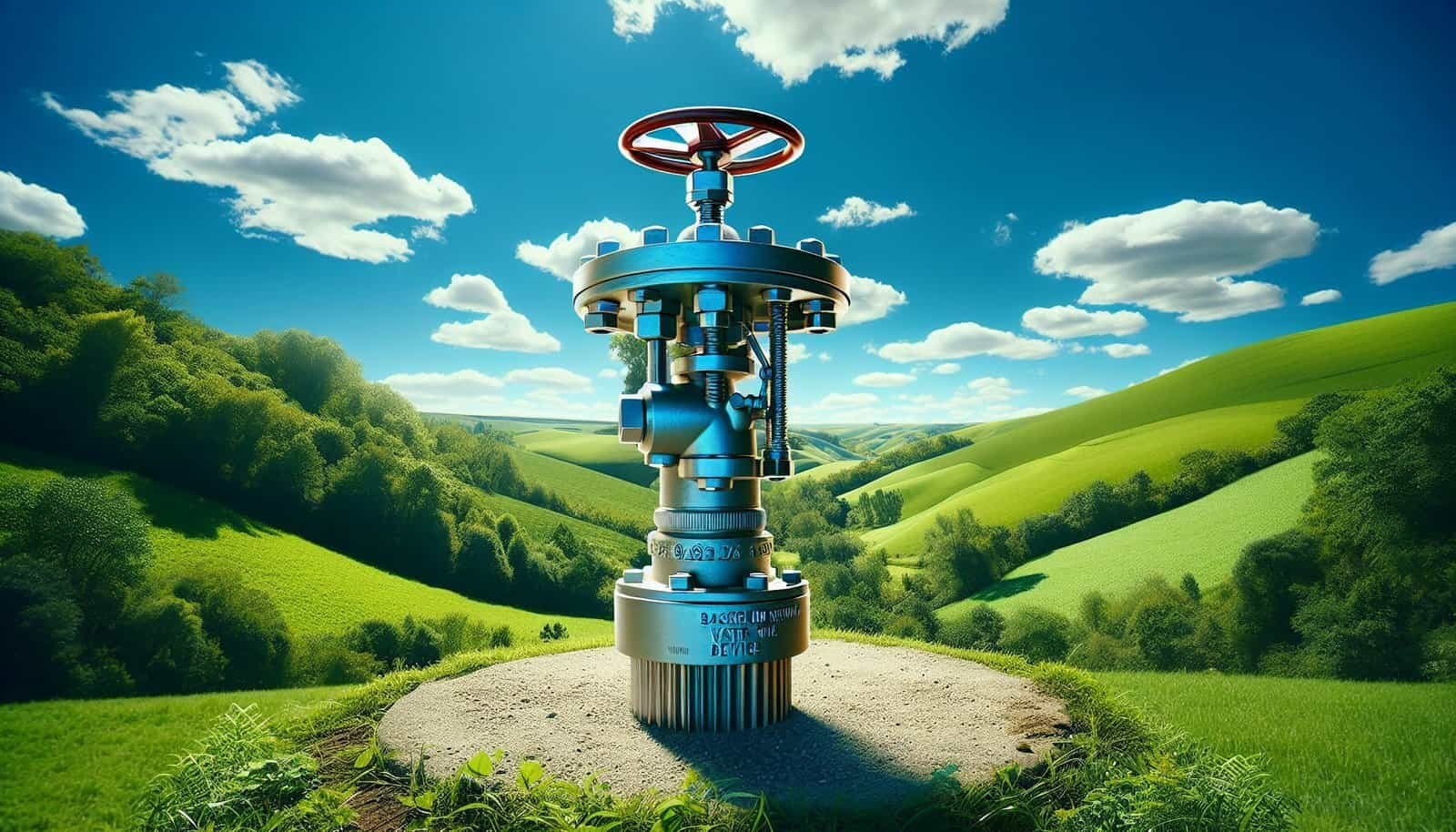How Do I Prevent Backflow Into My Well System?
Have you ever wondered about the importance of protecting your well system from backflow? It’s a critical concern that could impact the quality and safety of your water supply. Whether you’re new to managing a well system or have been doing it for years, understanding and implementing strategies to prevent backflow is essential for maintaining a healthy water supply for you and your family. Let’s explore how you can safeguard your well system from possible contamination.
What is Backflow?
Backflow refers to the unwanted reversal of water flow in your plumbing system. It can introduce contaminants into your well, leading to water quality issues. Normally, water in a well system should flow from a clean source into your home. However, backflow can disrupt this process, causing polluted water to flow backwards into your well.
There are two main types of backflow: backpressure and backsiphonage. Backpressure occurs when the downstream pressure exceeds the pressure in the supply system, while backsiphonage happens when there is a sudden drop in the supply pressure, drawing water back into the system.
Why is Preventing Backflow Important?
Preventing backflow is crucial in keeping your drinking water safe and uncontaminated. Contaminants can include harmful bacteria, chemicals, and sediments that negatively affect the taste, odor, and safety of your water. Additionally, the damage caused by backflow can lead to costly repairs and maintenance issues.
Most importantly, consuming contaminated water can have serious health consequences. By taking measures to prevent backflow, you ensure that your family’s health and the integrity of the well system are protected.

Common Causes of Backflow
It’s important to understand what might cause backflow in your well system. Various factors can lead to backflow issues, including:
Pressure Changes: Fluctuations in water pressure, often through usage or line breaks, can cause backflow.
Improper Plumbing Connections: Incorrect installations can create cross-connections, allowing contaminants to enter the water supply.
Faulty Valves: A malfunctioning valve can fail to prevent reverse flow, leading to backflow incidents.
Increase in Groundwater Levels: Rising groundwater conditions may alter pressure dynamics in the piping system.
Use of Hydronic Systems: Systems such as heating and cooling units connected directly to the water supply may affect flow dynamics.
Identifying Signs of Backflow
Identifying backflow before it becomes a significant issue can save you time, money, and stress. Here are a few signs to watch for:
- Change in Water Color or Odor: Discoloration or unusual smells can indicate that contaminants have entered your water supply.
- Unexpected Changes in Water Pressure: A notable shift in the water pressure could suggest a backflow problem.
- Visible Leaks or Water Damage: The presence of leaks, especially near cross-connection points, might indicate backflow.

Steps to Prevent Backflow
Learning to prevent backflow can be a straightforward process if you know where to start. Here’s a detailed guide on preventing backflow from affecting your well system:
Conduct Regular Inspections
Carrying out regular inspections of your plumbing and well system is essential in detecting potential issues early. Look for signs of damage or wear in pipes, valves, and connections.
Install Backflow Prevention Devices
The installation of backflow prevention devices can safeguard your water system from contamination. There are several types of backflow preventers, including:
- Air Gap: A non-mechanical method providing unbreakable protection through a physical separation of the supply line from potential contamination.
- Double Check Valves (DCV): Comprises two check valves to prevent backflow even if one valve fails.
- Reduced Pressure Zones (RPZ): Offers maximum protection and is often required in high-risk situations.
Choosing the right device depends on your specific requirements and local regulations.
Maintain Proper Air Gaps
Keep sufficient air gaps between fixtures and drain receptacles to prevent uncontaminated water from siphoning back into your well system. This practice is essential in kitchens, bathrooms, and laundry areas.
Monitor Pressure Levels
Regularly monitor water pressure levels within your plumbing. Proper pressure checks help in maintaining an optimal flow and prevent situations that may lead to backflow.
Professional Evaluation
Hiring a qualified professional to evaluate your well system can provide insights into potential vulnerabilities. A thorough examination by experts ensures all components are functioning correctly and have appropriate protective measures in place.
Educate Occupants
Inform everyone in your household or facility about the importance of maintaining a backflow-free system. Encourage prompt reporting of any unusual activity related to water supply, pressure, or quality.
Local/Zoning Regulations for Backflow Prevention
Understanding and adhering to local zoning and plumbing regulations is imperative for successful backflow prevention. Many municipalities have specific guidelines in place that require the use of certified backflow prevention devices at key points in a water system.
Consult your local water authority or government offices to understand the requirements applicable in your area. Compliance not only ensures clean water but also protects against potential fines or legal issues.

How Often Should Systems Be Checked?
The frequency of checks might depend on several factors, such as the age of your system, water use patterns, and regional guidelines. As a general rule, have a professional inspect your backflow prevention devices annually. Besides, regular personal checks on exposed pipes and valves can be beneficial to catch issues early.
Cost Implications of Backflow Prevention
Investing in backflow prevention may have upfront costs, but it is a valuable safeguard against costly repairs and health risks. To give you an idea, here’s a basic overview of potential costs:
| Item | Estimated Cost Range |
|---|---|
| Basic Inspection | $50 – $200 |
| Backflow Preventer Installation | $300 – $1,000+ |
| Professional Assessment | $100 – $300 |
| Annual Maintenance | $75 – $200 |
These costs can vary based on complexity, geographic location, and the type of device installed.

Benefits of Consistently Preventing Backflow
Establishing a reliable backflow prevention system brings you peace of mind. You’ll enjoy several benefits, such as:
- Improved Water Quality: Consistently clean and safe water for drinking and household use.
- Health Protection: Reduces the risk of exposure to waterborne illnesses from contaminated water sources.
- Financial Savings: Prevention minimizes costly repairs and extends the lifespan of plumbing fixtures and devices.
- Regulatory Compliance: Ensures adherence to local safety and health regulations.
Common Myths About Backflow Prevention
There are often misconceptions surrounding backflow prevention. Let’s debunk a few:
Myth 1: Backflow Devices Don’t Need Maintenance
Reality: Like any system, backflow prevention devices require regular maintenance to ensure their effectiveness and longevity.
Myth 2: Backflow Inspection is Unnecessary
Reality: Regular inspections can reveal both small and large issues early, saving time, cost, and potential health hazards.
Myth 3: Backflow Prevention is Only for City Water
Reality: Well water systems are equally susceptible to backflow contamination, and prevention devices are crucial for both setups.
Myth 4: Installing Devices is Too Costly to Bother
Reality: The investment in backflow prevention devices outweighs the possible costs of contamination, damage, and health risks.

Conclusion
Understanding how to prevent backflow into your well system secures your water quality and safety. By knowing the causes, signs, and solutions, you’re in a better position to protect your family’s health. Regular inspections, timely installation of prevention devices, and understanding your local regulations are vital steps in maintaining a backflow-free system.
Feel empowered to take action today, assuring that your well system remains both functional and uncontaminated for years to come.
